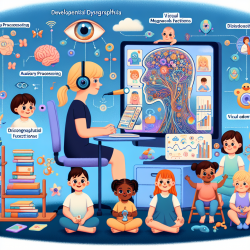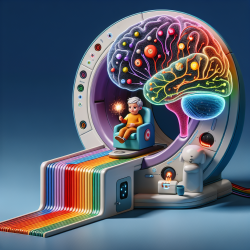Developmental dysgraphia is a specific learning disability that impacts a child's ability to write and spell despite having adequate schooling and normal intelligence. A recent study titled Cognitive Profiles of Developmental Dysgraphia provides valuable insights into the cognitive deficits underlying this condition. This blog aims to help practitioners improve their skills by implementing the research outcomes and encouraging further exploration.
Key Findings from the Study
The study identifies three crucial cognitive abilities that differentially characterize dysgraphia: phonological processing, auditory processing, and visual magnocellular functions. These abilities were assessed through various tests administered to 3rd and 4th-grade children, both with and without dysgraphia.
- Phonological Processing: Both phonological awareness and phonological working memory were found to be significant distinguishing variables between dysgraphic and normally spelling children.
- Auditory Processing: Auditory sound discrimination was identified as a critical factor, particularly in one subgroup of dysgraphic children.
- Visual Magnocellular Functions: Visual magnocellular deficits were prominent in another subgroup, highlighting the need for targeted interventions.
Implications for Practitioners
Understanding these cognitive profiles can significantly enhance the effectiveness of intervention programs. Here are some actionable steps:
- Customized Assessments: Use a comprehensive assessment approach that includes phonological, auditory, and visual processing tests to identify specific deficits.
- Targeted Interventions: Develop individualized intervention plans that address the specific cognitive deficits identified in each child. For instance, children with phonological deficits may benefit from phonemic awareness training, while those with visual magnocellular deficits may require visual processing exercises.
- Continuous Monitoring: Regularly monitor progress to adjust interventions as needed. Data-driven decisions can help in fine-tuning therapy plans for optimal outcomes.
Encouraging Further Research
The study opens several avenues for future research. Longitudinal studies could provide deeper insights into how these cognitive deficits evolve over time and impact literacy development. Additionally, integrating neuroimaging techniques could offer a more detailed understanding of the underlying neural mechanisms.
By embracing a data-driven approach and focusing on the specific cognitive profiles of children with developmental dysgraphia, practitioners can create more effective and individualized intervention plans. This not only enhances the child's learning experience but also improves long-term educational outcomes.
To read the original research paper, please follow this link: Cognitive Profiles of Developmental Dysgraphia.










